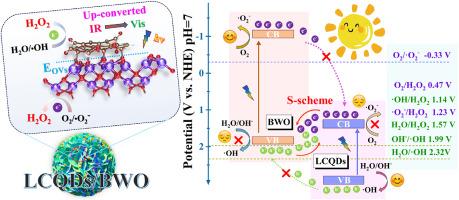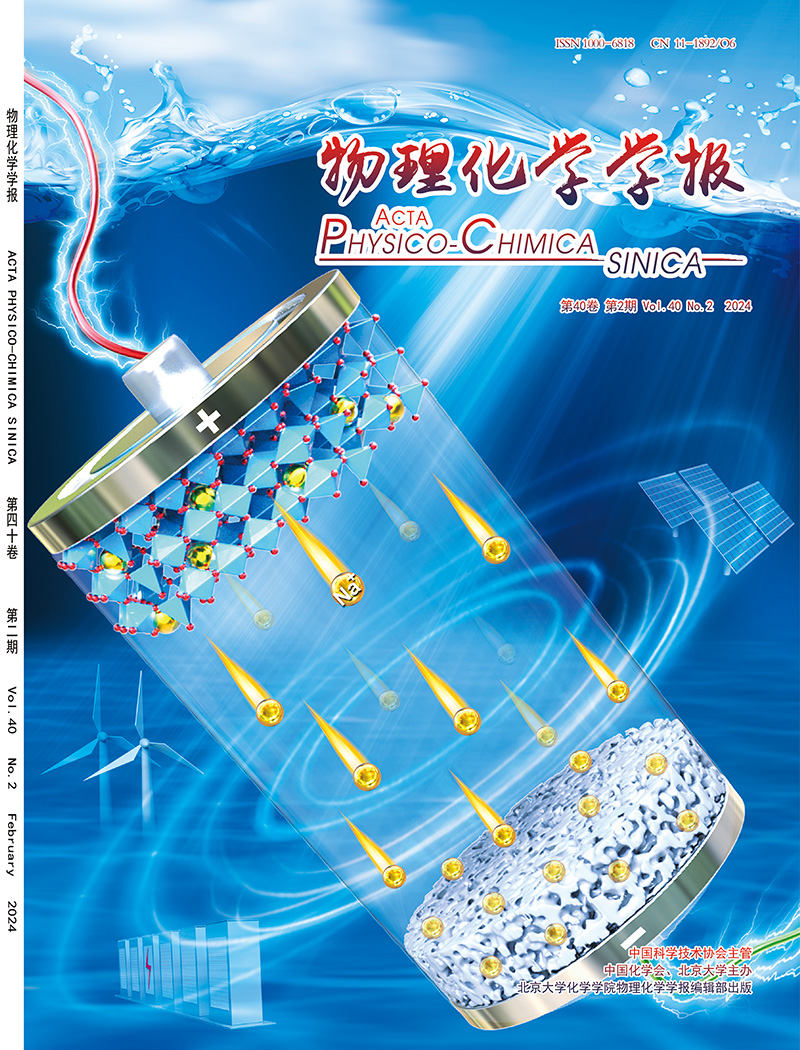Lignin derived carbon quantum dots and oxygen vacancies coregulated S-scheme LCQDs/Bi2WO6 heterojunction for photocatalytic H2O2 production
IF 13.5
2区 化学
Q1 CHEMISTRY, PHYSICAL
引用次数: 0
Abstract
This study presents an innovative photocatalytic system utilizing waste biomass resources for sustainable synthesis of hydrogen peroxide (H2O2) and high-value lignin derivatives. A lignin derived carbon quantum dots (LCQDs) loaded S-scheme heterojunction photocatalyst LCQDs/Bi2WO6 (LCD/BWO) was synthesized via hydrothermal method. The LCD/BWO composite demonstrates exceptional H2O2 production rate (3.776 mmol h−1 g−1) and maintains 89.72 % activity retention after 5 cycles under visible light irradiation, representing a 5.97-fold enhancement over catalyst BWO-A. The performance leap stems from synergistic effects between LCQDs and oxygen vacancies (OVs) defects: the unique up-conversion luminescence of LCQDs combined with S-scheme charge transfer mechanism enhances light absorption and carrier separation efficiency, while interfacial OVs act as electron traps to prolong carrier lifetime. In situ electron paramagnetic resonance (In situ EPR) analysis revealed substantial generation of •O2− and •OH radicals on catalyst surfaces. Band structure characterization confirms optimized H2O2 synthesis through consecutive single-electron reactions. Synergistic regulation of band positions significantly enhances oxygen reduction reaction (ORR) and water oxidation reaction (WOR) capabilities. As lignin primarily originates from agricultural/forestry waste, this work not only provides new design strategies for efficient photocatalytic systems but also advances high-value utilization of waste biomass resources.

木质素衍生的碳量子点和氧空位协同调节S-scheme立法会ds /Bi2WO6异质结光催化生产H2O2
本研究提出了一种利用废弃生物质资源可持续合成过氧化氢(H2O2)和高价值木质素衍生物的创新光催化系统。采用水热法合成木质素衍生碳量子点(立法会ds)负载S-scheme异质结光催化剂立法会ds /Bi2WO6 (LCD/BWO)。LCD/BWO复合材料具有优异的H2O2产率(3.776 mmol h−1 g−1),在可见光照射下5个循环后保持89.72%的活性,比催化剂BWO- a提高了5.97倍。性能的飞跃源自于氧空位缺陷的协同效应:氧空位的独特上转换发光结合S-scheme电荷转移机制,提高了光吸收和载流子分离效率,而界面的氧空位则起到电子陷阱的作用,延长载流子寿命。原位电子顺磁共振(In situ EPR)分析显示,在催化剂表面产生了大量的•O2−和•OH自由基。带结构表征证实了连续单电子反应对H2O2合成的优化。能带位置的协同调节显著提高氧还原反应(ORR)和水氧化反应(WOR)的能力。由于木质素主要来源于农业/林业废弃物,这项工作不仅为高效光催化系统的设计提供了新的策略,而且还推进了废弃生物质资源的高价值利用。
本文章由计算机程序翻译,如有差异,请以英文原文为准。
求助全文
约1分钟内获得全文
求助全文

 求助内容:
求助内容: 应助结果提醒方式:
应助结果提醒方式:


